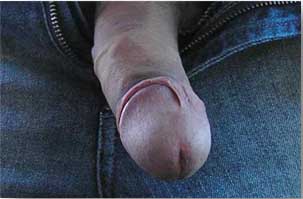Integrative Medicine and Biomedicine
The Difference between Integrative Medicine and Biomedicine
 There are several differences between integrative medicine and biomedicine. These are discussed in the sections that follow.
There are several differences between integrative medicine and biomedicine. These are discussed in the sections that follow.
Difference in overall purpose
Integrative medicine is an approach to medicine that is focused on combining alternative therapies with the conventional ones as a way of providing complete treatment to patients. Complete treatment in this case represents overall wellbeing in the body, mind and spirit of a patient. On the other hand, biomedicine is a distinct approach in medicine in which overall health of an individual is seen as a state in which the functioning of all the internal systems of the body is at an optimum level. It can be seen that whereas the focus of integrated medicine is on ensuring that a patient is healthy in body, spirit and mind, the focus of biomedicine is to ensure that all the internal systems are working properly. It is only when the internal systems are at their optimum level that an individual can be said to be in perfect health.
Difference in the role that the patient plays during treatment
It can be said that in both approaches, the patient takes the central position in the treatment process. Both forms lay much emphasis on the principle that good treatment should be patient – centered in the first place. It is this approach that differentiates these practices from conventional medicine.
However, the manner in which the patient is expected to play a central role in the course of treatment differs distinctively in both approaches. In biomedicine, the patient is taken to be the master. It is the uniqueness and specific demands of the patient that determine the nature, type and timing of the therapies used. This differs significantly from what takes place during the course of treatment under the integrative medicine approach. Since integrative medicine entails use of conventional and alternative therapies in the course of treatment, the role that the patient plays during this process is likely to vary depending on whether he or she is undergoing conventional therapies or getting complementary ones.
This is so because whereas the role of the patient in course of complementary therapies like nutritional supplements and exercises may remain central, this may not necessarily be the case in the course of undergoing conventional therapies such as chemotherapy in the case of cancer.
Differences in what constitutes the key aspects of a human being
The two approaches, biomedicine and integrative medicine, differ from each other in the way they view what the elements that constitute a whole person are. Although this may be a difference in principle, it does have an influence in practice since the approaches that are used and the way that they are administered really depends on the underlying principles of the practice.
In biomedicine, a whole person is seen as being composed of three key systems: neurological, digestive and immunological. It can be seen that clearly, the emphasis is on the biochemical composition of the body of a person. It then follows that disease, under this approach, is a result of a form of imbalance in any of these systems. Such imbalances may be caused by a buildup of toxins or poor intake of nutrients. Since this is the case, the approach works by seeking to restore balance to the biochemical functioning of a patient. This is done by recommending the kind of nutrients that should be taken to restore the balance in the three systems and ensure that removal of poisonous byproducts is efficient.
In integrative medicine, an individual is viewed as being made up of three aspects: the physical, spiritual and mental. Therefore, the health of an individual depends on how well the three aspects are functioning. It can be seen that the focus for integrative medicine is wider than that of biomedicine which is based on the biochemistry of the body and its related internal systems.
Differences in the kinds of therapies used
There are also fundamental differences between biomedicine and integrative medicine with regard to the kind of therapies that are used during treatment. For the case of integrative medicine, it should be noted that the approach combines conventional and complementary therapies. The conventional therapies that are used in the course of treatment under this approach vary with the disease that is being treated. A common point is that they include use of pharmaceutical drugs, special procedures such as surgery and other methods whose development and use has been based on rigorous scientific research, technological development and clinical trials.
In addition to these therapies, integrative medicine entails the use of other therapies which are derived from a number of different sources. For instance, different types of physical exercises may be used in the course of treatment. Also, practices such as acupuncture, body massage and use of special nutritional supplements may be used in the course of treatment.
The goal of combining these apparently different forms of treatment is that by doing this, the methods complement each other, thus enabling a patient to have full health in body, mind and spirit.
 Although biomedicine may use some of the alternative methods that are used in integrative medicine like naturopathic medicine, the mode of treatment under this approach remains confined to such methods.
Although biomedicine may use some of the alternative methods that are used in integrative medicine like naturopathic medicine, the mode of treatment under this approach remains confined to such methods.
Dr. Dalal Akoury of AWAREmed Health and Wellness Resource Centre has been on the forefront in the use of biomedicine and integrative medicine in the treatment of various diseases and conditions, chief among them being cancer. If you have a chronic disease or any condition that requires the attention of a doctor, do not hesitate to contact us for an engagement. We value our clients; that is why we endeavor to offer the most personalized care to them for any kind of condition.
The Difference between Integrative Medicine and Biomedicine




 ‘Big Data’ Big Dreams
‘Big Data’ Big Dreams







 For many patients, undergoing radical prostatectomy, a complex
For many patients, undergoing radical prostatectomy, a complex  Another one is the vacuum constriction device which, as the name suggests, works by sucking blood into the penis thus initiating an erection. The device is usually used minutes to intercourse and its efficiency has been commendable.
Another one is the vacuum constriction device which, as the name suggests, works by sucking blood into the penis thus initiating an erection. The device is usually used minutes to intercourse and its efficiency has been commendable.





 For years, studies have indicated that the use of different types of
For years, studies have indicated that the use of different types of  This leaves natural alternatives as the only viable option of handling the issue of decreased sexual desire arising from the effect of antidepressant drugs. There are a wide range of natural methods that can be used to help one regain sexual desire after suffering from the effects of antidepressant drugs. For instance, use of specific diet as well as
This leaves natural alternatives as the only viable option of handling the issue of decreased sexual desire arising from the effect of antidepressant drugs. There are a wide range of natural methods that can be used to help one regain sexual desire after suffering from the effects of antidepressant drugs. For instance, use of specific diet as well as 











 Understanding Male Sexual Problems
Understanding Male Sexual Problems



